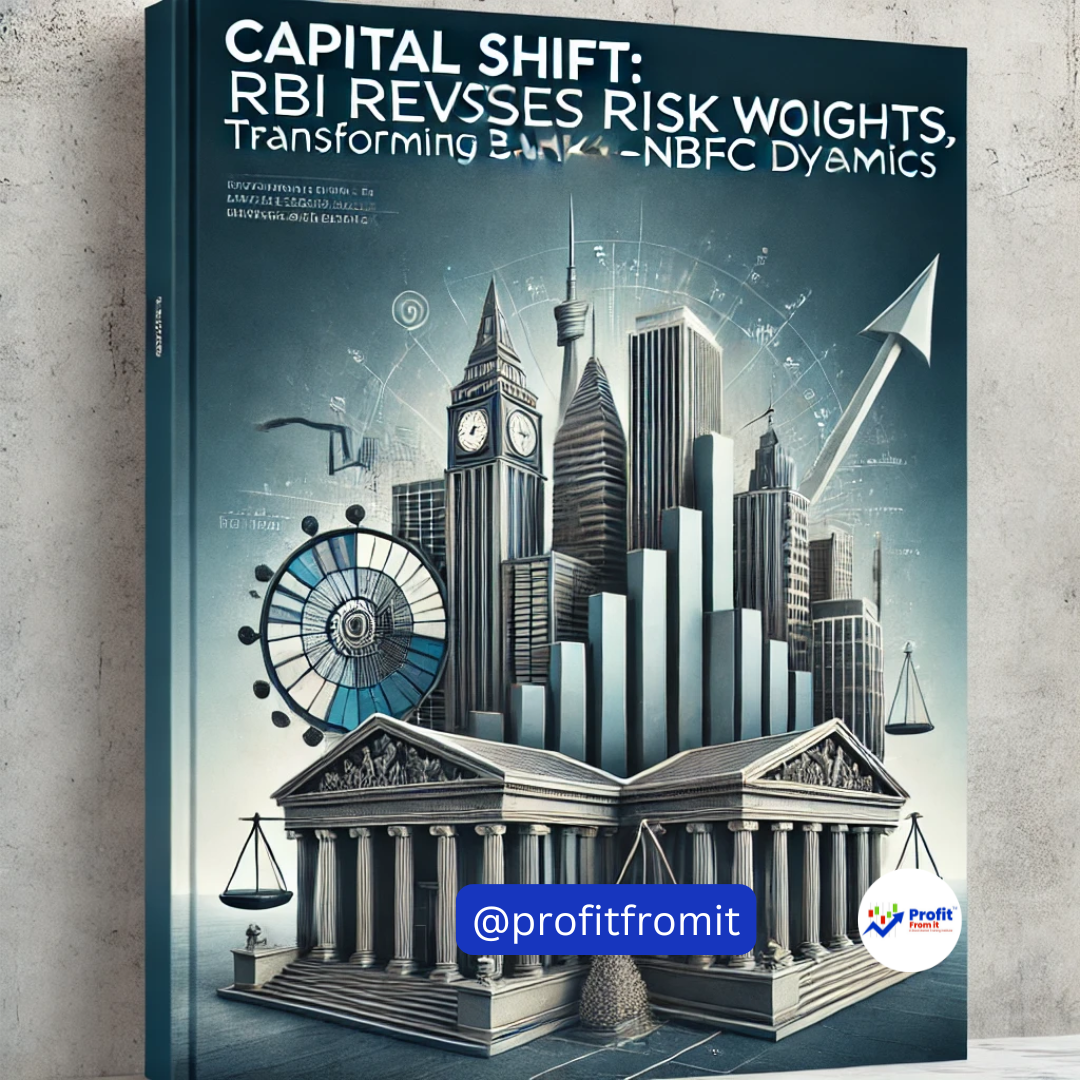
Capital Shift: RBI Revises Risk Weights, Transforming Bank-NBFC Dynamics
Key Changes:
Restoration of Risk Weights 🔄: The RBI has decided to revert the risk weights for exposures of Scheduled Commercial Banks (SCBs) to Non-Banking Financial Companies (NBFCs) back to levels based on the external rating of the NBFCs.
Previously, in November 2023, the RBI had increased these risk weights by an additional 25 percentage points if the original weight (based on external ratings) was below 100%.
Exclusions ❌: The changes exclude loans to housing finance companies and loans to NBFCs that qualify for classification as priority sector lending.
Effective Date 📅: These changes will be effective from April 1, 2025.
Impact on Banks and Finance Companies:
Capital Requirements 💰: Banks will potentially require less capital to back loans extended to NBFCs, assuming those NBFCs have favorable external ratings. This could lead to an increase in bank lending to high-rated NBFCs, as it becomes less capital-intensive to do so.
Credit Flow to NBFCs 🌊➡️🏦: By reducing the capital charge on loans to NBFCs, it could encourage banks to increase their lending to this sector, which might have been more costly under the previous directive.
Risk Management 🛡️: Banks will need to continue diligent risk assessments of NBFCs, as the capital requirement is now more closely tied to the external credit ratings of these financial entities.
Investor Perspective:
Opportunities in Banking Sector 📈: Investors might view this as positive for banks that have significant exposure to NBFCs, as the lowered capital requirements can free up capital for other uses or reduce the cost of capital.
Assessing NBFC Stocks 📊: For investments in NBFCs, investors should look at those with strong credit ratings as potentially more attractive, as they are likely to secure more bank financing.
Market Sentiment 📉📈: This regulatory easing could be viewed positively by the market, potentially boosting the stock prices of both banks and high-rated NBFCs.
Long-term Considerations 🔍: Investors should consider the implications of these changes on the risk profiles of banks and NBFCs, particularly how they manage the quality of their loan portfolios and their exposure to different sectors.
Companies Likely to Benefit:
Scheduled Commercial Banks:
HDFC Bank 🏦
ICICI Bank 🏦
State Bank of India 🏦
Axis Bank 🏦
Kotak Mahindra Bank 🏦
These banks are known for their significant interactions with the NBFC sector and could see reduced capital costs and increased lending opportunities.
Highly Rated NBFCs:
Bajaj Finance 💼
HDFC Ltd 💼 (Housing Development Finance Corporation)
Shriram Transport Finance 💼
Mahindra & Mahindra Financial Services 💼
L&T Finance Holdings 💼
These NBFCs have historically maintained strong credit ratings and could benefit from increased access to bank finance at potentially lower costs due to the revised risk weight norms.
Live Example: Impact of RBI's Revised Risk Weights on ICICI Bank and Bajaj Finance 📈
Background:
ICICI Bank, one of India's leading commercial banks 🏦, has extensive dealings with various NBFCs, including Bajaj Finance, which is noted for its strong credit rating and diverse financial services.
Scenario Before the Change:
Previously, ICICI Bank was required to maintain higher capital reserves when lending to Bajaj Finance due to an increased risk weight of 125% on such exposures. This meant for every ₹100 lent to Bajaj Finance, ICICI Bank had to set aside ₹125 in capital, limiting the amount available for other lending or investment opportunities.
Impact of the RBI's Regulatory Revision:
With the RBI’s decision to revert risk weights to match the external ratings of NBFCs, the risk weight on Bajaj Finance drops back to 100% due to its strong credit profile 💼. Now, for every ₹100 lent to Bajaj Finance, ICICI Bank only needs to reserve ₹100.
Outcome:
Increased Lending Capacity 💪: ICICI Bank can now lend more to Bajaj Finance and other high-rated NBFCs without the need for additional capital. This boosts the bank's lending portfolio and potentially its profitability.
Reduced Cost of Funds for Bajaj Finance 📉: With more banks willing to lend due to lower capital requirements, Bajaj Finance can negotiate lower interest rates, reducing its cost of funds and enhancing its ability to offer competitive financial products.
Market Dynamics 🌐: The overall market sees an increase in liquidity, particularly for high-rated NBFCs, encouraging more robust financial activities and support for economic growth.
Conclusion:
This live example of ICICI Bank and Bajaj Finance illustrates the direct benefits of the RBI's revised risk weight regulations. It demonstrates enhanced operational efficiency and market competitiveness, which are critical for the growth and stability of the financial sector.
As an investor, it is crucial to monitor how these changes affect the lending practices of banks to NBFCs, as well as the overall financial health of the NBFC sector. This adjustment in regulatory measures can provide both opportunities and risks, depending on how entities in the financial sector respond to these changes.
